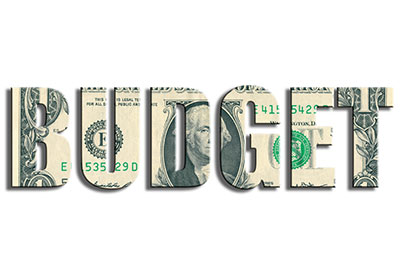
It may seem like we just rang in the New Year, but 2019 is already half over. You may have set some financial resolutions for the year or have some money goals you wanted to accomplish. By staying on top of your financial situation and reviewing where you stand at least twice a year, you’ll have a better handle on where your money is going. This means that you can refocus your saving and spending on what matters the most to you and understand places where you can cut back.
Review Your Budget
Now that the year is half over, it’s a great opportunity to check your monthly budget and make sure it’s still accurate. Perhaps you got a raise earlier in the year, or your rent increased. Maybe you cancelled some subscriptions and added others. By doing a thorough review of both your fixed costs, as well as your spending on things like groceries and restaurants, you can ensure that your budget reflects your current financial reality. And if it doesn’t, you can adjust accordingly. The AICPA’s 360 Degrees of Financial Literacy website has an easy to use household budget calculator that will let you understand where your money is going.
Get Proactive
After revising a household budget and understanding where your money is going, it’s time to see if there is anything that can be cut. Be honest with yourself – how often have you used your subscriptions and memberships over the first 6 months of the year? If you haven’t been able to find time to go to the gym more than handful of times, it’s probably a good idea to cancel your gym membership or see if you can switch to paying per-visit. Similarly, if your phone, cable or internet subscriptions aren’t syncing up with your usage, it’s a worthwhile use of your time to call your provider and see if they can offer you a better deal. Finally, do a detailed review of all the charges on your credit and debit card and make sure you’re aware of any recurring charges for services and subscriptions. Many people will sign up for a trial period and forget to cancel, unaware that they are being charged a monthly fee for a service they aren’t using. If you can find even $25 a month in savings, it will add up to $300 annually.
Motivate Yourself!
Let’s face it, saving money isn’t usually as fun as spending money. That’s why it’s important to give yourself a treat once in a while for staying on course. Splurging on concert tickets or an article of clothing that you’ve had your eye on after hitting a financial goal — say reducing the amount of money you spend on dining out — can be the motivation you need to stay on course and lock in these positive behavioral changes. Of course, the amount you spend treating yourself shouldn’t be more than the amount you’re saving. But it’s an important way to conceptualize the power you have over how you spend your discretionary dollars and how you can allocate more money toward the things you really want by cutting costs elsewhere.
Consult Your Local CPA
Every day, local CPAs offer clients expert advice on a wide variety of financial concerns, including making a major purchase or obtaining a loan. Whatever your financial questions, your CPA can help you find the answers. Locate a CPA near you with our Find-A-CPA directory.
Copyright 2019 The American Institute of Certified Public Accountants.
